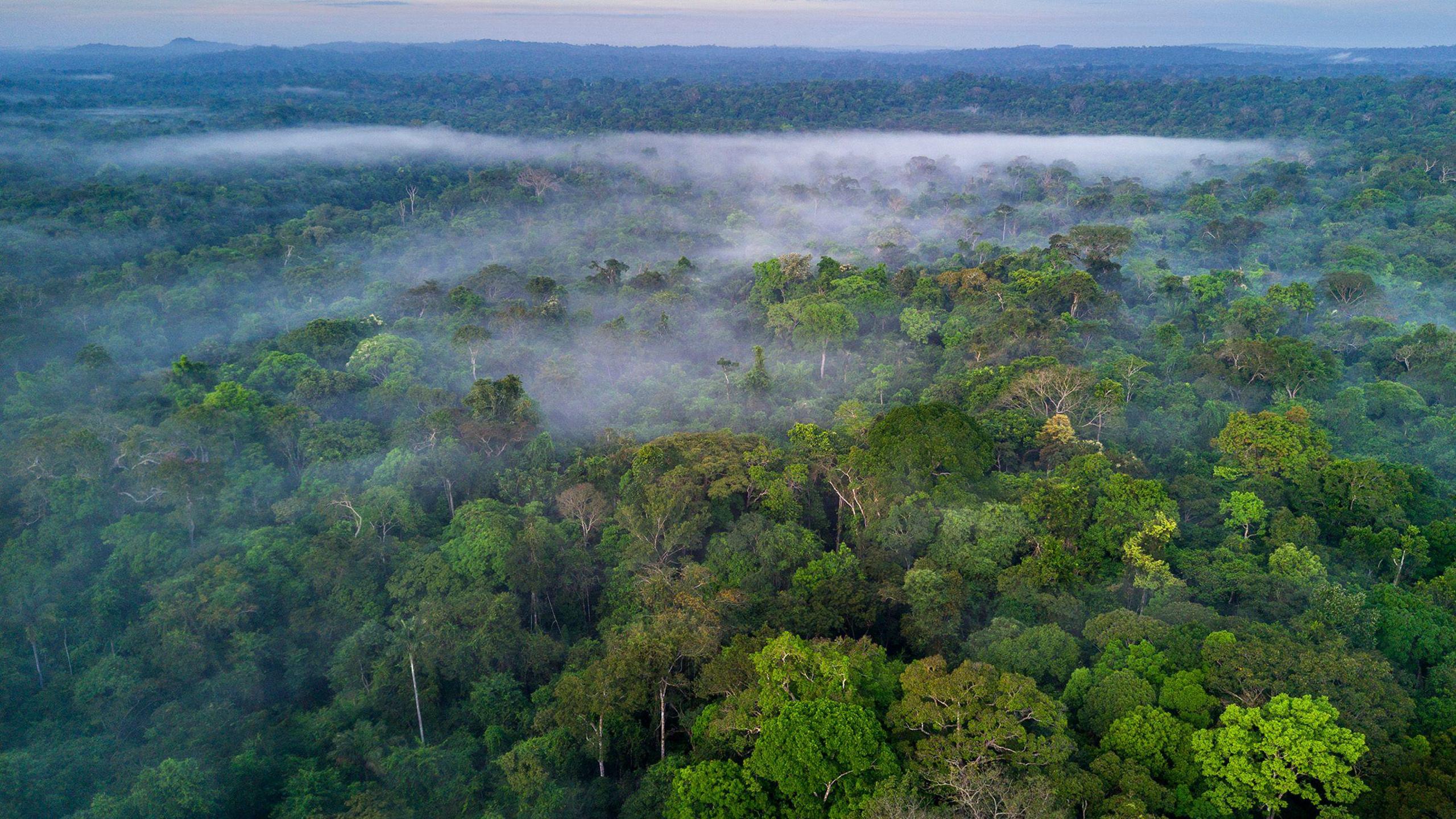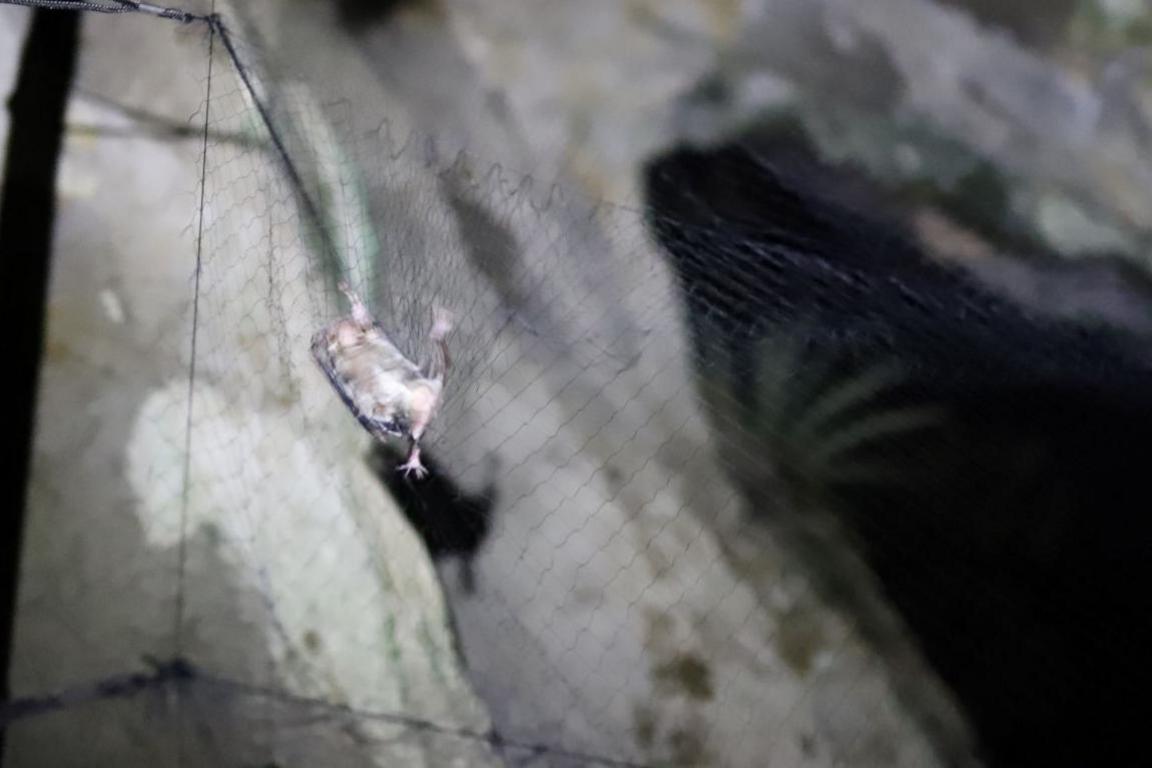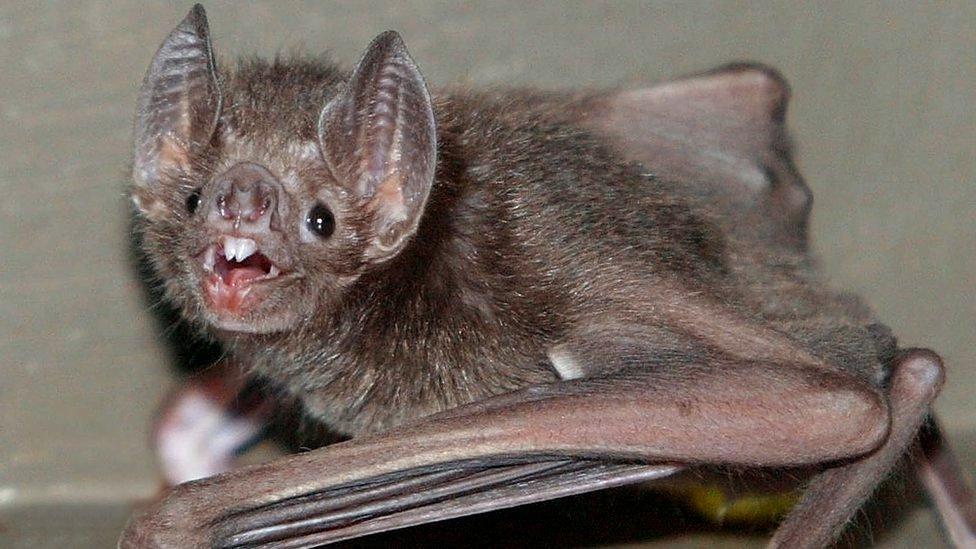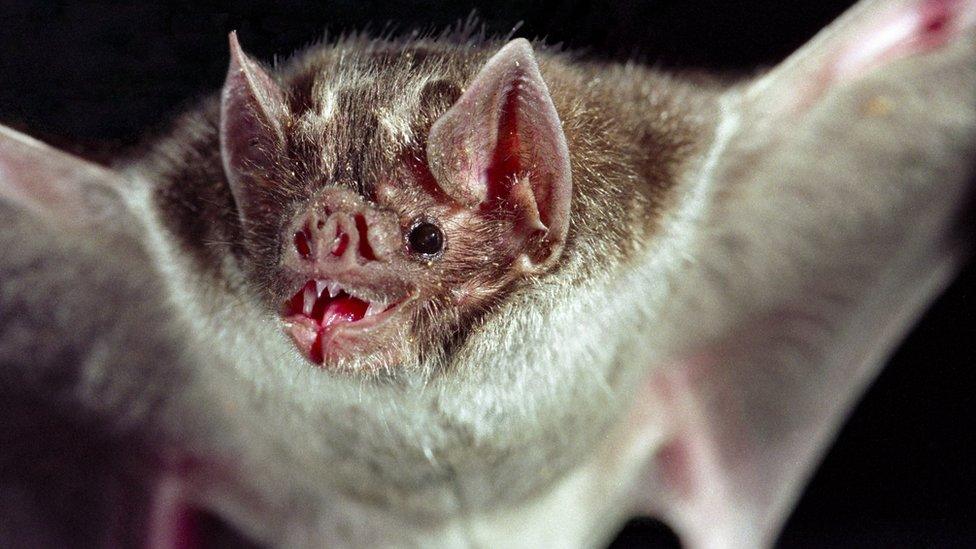Scottish scientists tackle vampire bat rabies threat in Amazon

Vampire bats are spreading rabies into new areas of the Amazon
- Published
Scottish scientists in the Amazon are helping to tackle a growing threat from vampire bats, which carry the deadly rabies virus.
Researchers say more humans and livestock are being bitten by the bats because of the impacts of climate change - due to rising temperatures and changing land use.
A team led by the University of Glasgow is developing vaccines and monitoring the expansion of bat roosts in Peru, Columbia and Brazil.
Rabies kills tens of thousands annually with 40% of those deaths in under-15s, according to the World Health Organisation.
It is regarded globally as the most lethal of the infectious diseases and left untreated leads to almost-certain death in people who are unvaccinated.
Almost all human cases are caused by dogs, but vampire bats are huge carriers in Amazonian countries such as Peru, Columbia and Brazil - where the UN climate change conference COP30 is being held.

Rabies is spreading at up to 20km (12 miles) each year across the Amazon landscape
Prof Daniel Streicker, from Glasgow University's Centre for Virus Research, said an increasing number of areas were becoming affected by rabies.
He said: "This is a virus transmitted by blood-feeding bats. The bats need to eat blood every two to three days to survive.
"People are getting bitten by bats routinely and for many, many years nothing can happen and then suddenly deaths begin."
He adds that there are hundreds of thousands of bats biting animals and humans in the Amazon every night.

Prof Daniel Streicker has been working with bats for more than a decade
A prime reason for the spread is believed to be climate change, with evidence that vampire bats in parts of Mexico are moving into new areas further north.
The teams have witnessed an increasing spread of rabies across the landscape which is advancing at a rate of between 10km (6 miles) and 20km (12 miles) every year.
They are aiming to improve understanding of the reasons for the spread to anticipate where communities are most vulnerable.
Since 2007, researchers have been taking blood and faeces samples from vampire bats at dozens of locations to check for signs of the virus.
Theses include monitoring rabies in bat caves in Peru, where nets are installed on cave entrances to capture the bats.
The samples are flown back to Glasgow for lab testing.
The results helps them track the spread so communities can be warned to take preventative action through vaccination of themselves and their livestock.

Nets are installed on cave entrances to capture the bats for blood testing
Experts say pressures on indigenous populations living in the rain forest are also behind the growth in vampire bat bites.
The introduction of livestock into some regions is providing new feeding opportunities for the mammals.
Human attempts to catch and kill bats in areas where rabies is present is also understood to be driving infected animals into new areas.
In the long run, the teams are hoping to develop vaccination programmes that can be administered into the bat populations.
One way of doing this involves administering the vaccine onto the animals as a paste and relying on transmission through other bats licking the fur.
The process has been tested in lab conditions with field trials expected to begin soon.
But the process is self-limiting, meaning only those immediately surrounding the treated bat would ingest the vaccine.
Scientists are also working on a transmissible vaccine which can spread throughout the population without having to rely solely on the original treated animal.
- Published20 March 2020

- Published4 April 2022

- Published19 February 2018
